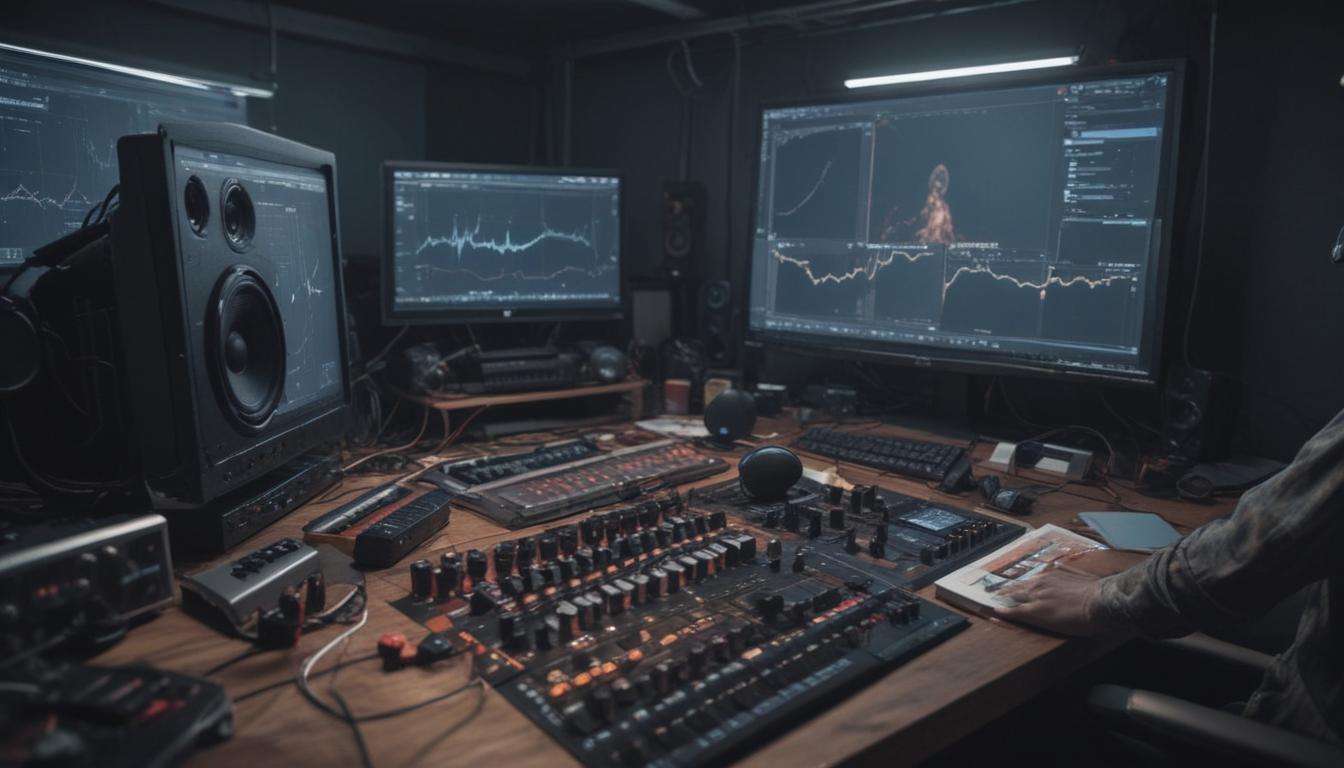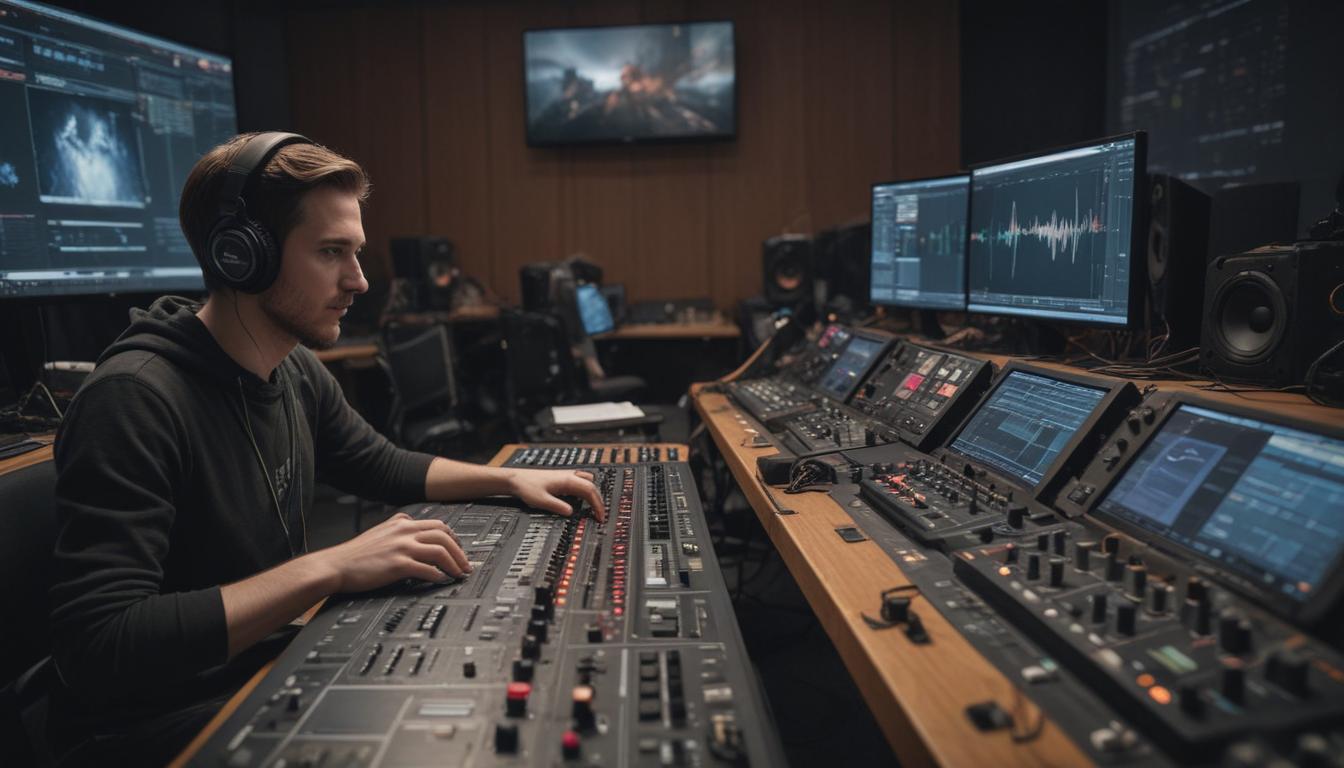Now Reading: Level Up Your Game Audio Coding
- 01
Level Up Your Game Audio Coding
Level Up Your Game Audio Coding

A Deep Dive into Audio Programming for Games
You’ve spent countless hours polishing your game’s graphics, tweaking the controls until they feel perfect, and crafting a compelling world for players to explore. Yet, when you playtest it, something feels hollow. The world is visually alive but sonically dead. Footsteps are missing, combat lacks impact, and the environment feels static. This disconnect between sight and sound can break immersion faster than any low-resolution texture or buggy quest. The silence or a poorly implemented soundtrack is a void that players can feel, turning a potentially great experience into a forgettable one.
The solution isn’t just about having great sound effects or a killer music score; it’s about how those audio assets are brought to life inside the game engine. This is the world of audio programming. It is the crucial bridge that connects your sound files to the game’s logic, transforming static assets into a dynamic, reactive soundscape. By programming audio events, you can make the world respond to the player’s every move, creating a rich, believable, and emotionally resonant experience that elevates your entire project. This guide will walk you through the fundamental concepts that turn silent code into a symphony of immersive gameplay.
Why Audio Programming is Your Game’s Secret Weapon
Think of audio programming as the unsung hero of game development. While stunning visuals grab a player’s initial attention, it’s the audio that truly grounds them in the game’s reality. Good audio programming provides essential feedback, enhances emotional depth, and builds a cohesive world. When a player presses a button in a menu, a subtle click provides confirmation. When they swing a sword, the “swoosh” and eventual “clang” of metal on metal deliver a satisfying sense of impact. These aren’t just decorative sounds; they are vital pieces of information that make the game feel responsive and intuitive.
Beyond simple feedback, audio programming is your most powerful tool for setting the mood and guiding the player’s emotional journey. Imagine walking through a quiet forest, the sound of birds chirping and leaves rustling around you. Suddenly, the ambient music swells with a tense, rhythmic undercurrent, signaling that danger is near before you ever see an enemy. This is dynamic audio at work, a system programmed to react to the game’s state—like the proximity of a foe—to manipulate the player’s feelings of safety, fear, or excitement. It’s the difference between a game that you play and a world that you inhabit.

The Core Pillars of Game Audio Programming
Getting started with audio programming involves understanding a few key principles. At its heart, it’s about telling the game engine which sound to play, when to play it, and how to modify it based on what’s happening in the game. This can range from the incredibly simple to the deeply complex, but the foundational concepts remain the same. Mastering these pillars will give you the power to craft truly impressive and immersive auditory experiences for your players.
These concepts are the building blocks upon which all advanced audio systems are built. Once you understand how to trigger sounds and manipulate their properties in real-time, you can begin to layer them to create a soundscape that feels truly alive and reactive. This is where the art of sound design meets the logic of programming to create something genuinely special.
Playing Sounds The Basics
The most fundamental task in audio programming is simply triggering a sound to play. This is often accomplished with a single line of code. For instance, you might call a function to play a “footstep” sound every time the player character’s animation cycle hits a certain point. These are often called “one-shot” sounds because they play once and then stop. This category includes everything from gunshots and explosions to item pickups and user interface clicks. They are the bread and butter of game audio, providing the immediate, satisfying feedback that makes interactions feel tangible.
The next step up is managing persistent sounds, like background music or ambient environmental loops. Instead of just playing a sound once, you need to tell the engine to loop it continuously. You also need to manage its state. For example, you’ll need code to start the main menu music when the game loads, stop it when the player starts a new game, and transition smoothly to the in-game ambient track. This also involves controlling a sound’s basic properties, primarily its volume and pitch, which can be adjusted to create simple but effective dynamic effects.
Creating Dynamic Audio Systems
This is where audio programming becomes a true art form. A dynamic audio system is one that changes in real-time based on game parameters. Instead of just playing a single combat track, you could have multiple layers of music—a basic rhythm, a string section, and an intense percussion layer. Your code can then fade these layers in and out based on the number of enemies on screen or how much health the player has left. This is often called adaptive music, and it ensures the soundtrack perfectly matches the on-screen action.
This dynamic approach also applies to sound effects. Consider a character running from an indoor space to an outdoor one. The sound of their footsteps should change from a sharp echo on a tile floor to a soft crunch on grass. Furthermore, you can implement systems like occlusion and obstruction, where sounds are muffled or blocked by objects in the environment. If an enemy is shouting from behind a thick concrete wall, the sound should be muffled and quiet. As you move around the wall, the sound becomes clearer. This is achieved by programming audio to react to the game’s physics and geometry, creating a believable and spatially aware 3D soundscape.
Choosing Your Tools Audio Engines and Middleware
As a game developer, you have several options for implementing audio. Most modern game engines, like Unity and Unreal Engine, come with robust built-in audio systems. These are fantastic for getting started, as they are well-integrated, well-documented, and capable of handling everything from basic sound playback to more advanced 3D spatialization. For many indie projects or games with straightforward audio needs, the native engine tools are more than sufficient to create a compelling experience.
However, for projects that demand highly complex and layered audio, developers often turn to dedicated audio middleware. The two most prominent tools in the industry are FMOD and Wwise. These are essentially separate applications designed specifically for creating and implementing interactive audio. They offer sound designers a powerful, node-based interface to build intricate audio events without writing code. The audio programmer then uses an API to trigger these complex events from the game engine. Middleware provides unparalleled control over mixing, effects, and dynamic systems, making it the standard choice for AAA studios and ambitious indie developers who want to push the boundaries of game audio.


































